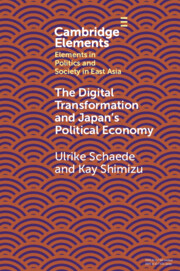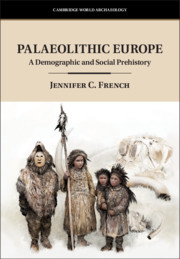Refine search
Actions for selected content:
38 results
12 - Living Long and Living Well
- from Part III - Social Transformation and Taxation
-
-
- Book:
- Taxing People
- Published online:
- 18 December 2025
- Print publication:
- 22 January 2026, pp 221-242
-
- Chapter
- Export citation
White Identity Activation and Attitudes toward Diversity and Immigration in Canada
-
- Journal:
- Canadian Journal of Political Science/Revue canadienne de science politique , First View
- Published online by Cambridge University Press:
- 24 November 2025, pp. 1-24
-
- Article
-
- You have access
- Open access
- HTML
- Export citation
Beliefs about demographic change: how well are individuals informed?
-
- Journal:
- Journal of Pension Economics & Finance , First View
- Published online by Cambridge University Press:
- 27 August 2025, pp. 1-29
-
- Article
-
- You have access
- Open access
- HTML
- Export citation
No Longer the Only Game in Town? Immigration, Authoritarianism and the Future of Democracy in the West
-
- Journal:
- Government and Opposition / Volume 60 / Issue 4 / October 2025
- Published online by Cambridge University Press:
- 30 July 2025, pp. 1089-1111
-
- Article
-
- You have access
- Open access
- HTML
- Export citation
Demographic Shifts and Public Attitudes Toward the January 6th Attack
-
- Journal:
- Journal of Race, Ethnicity and Politics / Volume 10 / Issue 1 / March 2025
- Published online by Cambridge University Press:
- 26 March 2025, pp. 129-151
-
- Article
- Export citation
Community-Based Care During COVID-19: Balancing Social Distancing And Social Care In Rural Japan – The Case Of The Aso Region
-
- Journal:
- Asia-Pacific Journal / Volume 22 / Issue 3 / March 2024
- Published online by Cambridge University Press:
- 14 March 2025, e5
-
- Article
-
- You have access
- Open access
- Export citation
Validating Whites’ Reactions to the “Racial Shift”
-
- Journal:
- Journal of Experimental Political Science , First View
- Published online by Cambridge University Press:
- 12 March 2025, pp. 1-13
-
- Article
-
- You have access
- Open access
- HTML
- Export citation
1 - Oil Discovery and the Formation of a New Iranian Society
-
- Book:
- Toiling for Oil
- Published online:
- 28 November 2024
- Print publication:
- 05 December 2024, pp 20-43
-
- Chapter
- Export citation
Demographic change, secular stagnation, and inequality: automation as a blessing?
-
- Journal:
- Journal of Demographic Economics / Volume 91 / Issue 4 / December 2025
- Published online by Cambridge University Press:
- 18 September 2024, pp. 508-548
-
- Article
-
- You have access
- HTML
- Export citation
Chapter 10 - Cooperative Extension and Diversity
- from Part III - Looking Ahead: Emerging Issues and Trends
-
-
- Book:
- Extension Education and the Social Sciences
- Published online:
- 28 March 2024
- Print publication:
- 04 April 2024, pp 205-223
-
- Chapter
- Export citation
Financialisation and the limits of circuit theory
-
- Journal:
- Finance and Society / Volume 6 / Issue 1 / 2020
- Published online by Cambridge University Press:
- 09 November 2023, pp. 1-18
-
- Article
-
- You have access
- Open access
- Export citation

The 1918–20 Influenza Pandemic
- A Retrospective in the Time of COVID-19
-
- Published online:
- 03 November 2022
- Print publication:
- 24 November 2022
-
- Element
-
- You have access
- Open access
- HTML
- Export citation

The Digital Transformation and Japan's Political Economy
-
- Published online:
- 01 June 2022
- Print publication:
- 30 June 2022
-
- Element
- Export citation
Coping with demographic change: macroeconomic performance and welfare inequality effects of public pension reform
-
- Journal:
- Journal of Pension Economics & Finance / Volume 22 / Issue 3 / July 2023
- Published online by Cambridge University Press:
- 18 May 2022, pp. 425-449
-
- Article
- Export citation
When Coethnicity Fails
-
- Journal:
- World Politics / Volume 74 / Issue 2 / April 2022
- Published online by Cambridge University Press:
- 14 February 2022, pp. 249-284
- Print publication:
- April 2022
-
- Article
- Export citation
Academic Absences, Disciplinary Siloes and Methodological Prejudices within the Political Science Discipline in Canada
-
- Journal:
- Canadian Journal of Political Science/Revue canadienne de science politique / Volume 54 / Issue 4 / December 2021
- Published online by Cambridge University Press:
- 13 December 2021, pp. 749-768
-
- Article
-
- You have access
- HTML
- Export citation

Palaeolithic Europe
- A Demographic and Social Prehistory
-
- Published online:
- 27 October 2021
- Print publication:
- 09 December 2021
DEMOGRAPHIC CHANGE AND PERCEPTIONS OF RACISM
-
- Journal:
- Du Bois Review: Social Science Research on Race / Volume 18 / Issue 2 / Fall 2021
- Published online by Cambridge University Press:
- 25 August 2021, pp. 251-287
-
- Article
- Export citation
Does Immigration Produce a Public Backlash or Public Acceptance? Time-Series, Cross-Sectional Evidence from Thirty European Democracies
-
- Journal:
- British Journal of Political Science / Volume 52 / Issue 3 / July 2022
- Published online by Cambridge University Press:
- 19 July 2021, pp. 1013-1031
-
- Article
- Export citation
Actuarial deductions for early retirement
-
- Journal:
- Journal of Demographic Economics / Volume 87 / Issue 2 / June 2021
- Published online by Cambridge University Press:
- 01 March 2021, pp. 141-167
-
- Article
- Export citation
